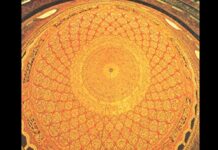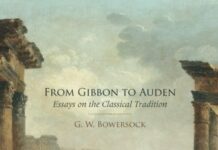
Ebook Info
- Published: 2017
- Number of pages: 220 pages
- Format: PDF
- File Size: 4.72 MB
- Authors: G. W. Bowersock
Description
Little is known about sixth-century Arabia. Yet from this distant time and place emerged a faith and an empire that stretched from Iberia to India. G. W. Bowersock illuminates this obscure yet most dynamic period in Islam, exploring why arid Arabia proved to be fertile ground for Muhammad’s message and why it spread so quickly to the wider world.
User’s Reviews
Reviews from Amazon users which were colected at the time this book was published on the website:
⭐”The Crucible of Islam”‘s author, GW Bowersock, has scholarly chops in the subject of old Arabia (as he is not shy in telling us – see below). Over the last few years, he has been sketching the sectarian milieu of the pre-Islamic desert fringe, for instance in the last chapter of “The Throne of Adulis”. “Crucible” is, in effect, his expansion of that chapter. I didn’t have high hopes for this one, based on that earlier chapter, which I worried accepted too much of classical Islamic dogma. Bowersock has here failed to meet even those hopes.(The codex is inexpensive, as hardbacks go, and even so Harvard have trimmed its top cover in gold. Nobody does scholarship like Harvard these days. They’re the big league, I can tell you. The best.)Bowersock’s introduction addresses the works of Donner, Hoyland, and Azmeh (although not Holland or Howard-Johnston). He is unsatisfied with any of these, which – he implies – don’t sufficiently take into account the milieu before Islam. “Crucible” proposes to lay the groundwork for any future attempts in this direction.”Crucible” is prone to sweeping third-person comments, even where the author throws up his hands. “Inexplicably” is how he describes the Ethiopian withdrawal from Yemen. There *are* explanations; Bowersock just doesn’t address them, or know them. Same for “astonishing coincidence” that Ethiopia went Christian around that time. These developments could well be related. Someone could write a book on that.Bowersock says up front (p. 12) that he will not tolerate so-called “minimalism”. More: “A classical scholar and ancient historian, such as the present writer, may perhaps be allowed to say that the factional quarrels that have bedeviled Western scholarship on Islam should be brought to a close.” Speaking as a degreed *student* of classical scholarship and ancient history, I don’t like to hear this from my teachers. It is prolix, it pulls rank, it requests an end to a debate decidedly not concluded (“the science is settled”?), and it plays the martyr (who is banning him from “saying” anything against “minimalism” and, by proxy, for Islam? I want names). I doubt he would allow apish chest-beating like this from his IRL students.We minimalists, whom Bowersock has locked out of his classroom, may at least console ourselves with sufficient “would have” (pp. 16, 24, 26) and “more than likely” (p. 27) on pre-Islamic Mecca to fuel a festive drinking-game outside his door. For instance “There is some reason to think that [the Meccans] .. attempted to profane the church in San’a with excrement.” appears p. 24; no such coprolites have been excavated in the relevant Yemeni sites, nor is there contemporary record, all of it is from later Islamic legend.Bowersock offers his argument for Mecca’s position in chapter 3, but I must warn its minimalist readers that we risk cirrhosis. This chapter claims a Meccan presence in Axum which “proves” Mecca’s influence; but the Meccan presence is, itself, footnoted only to an internal reference, to a chapter whose relevant part assumes the post-Qur’anic legend of the Negus (p. 52 to chapter 4). Makoraba is noted p. 53… again… despite that this evidence is lexical and therefore weak. And pace pp. 51, 172 & n. 7: Q. 6:92, 42:7 do *not* call Mecca “the mother of cities”, these suras nowhere utter the word “Mecca”, and they haven’t been proven to have a Meccan context – if anything sura 6’s main context, on Abraham’s conversion to Allah, is Iraqi. The furthest we can possibly go is the direction of Crone’s work (as noted p. 52), that Mecca might have been a terminus for the leather-trade in the Jiddah / Ukaz sector. And even that would prove only Mecca’s existence, not its place in any of the pre-Islamic stories which Bowersock relates about it, like the “Year of the Elephant”. At least on that score the author leaves to “mystery” the miracle of the birds p. 29.Bowersock heaps scorn on Western scholars’ musings that the Qur’anic foil of mushrikun practiced “soft monotheism” pp. 34-45. I cannot recall where I have read of “soft monotheism” myself but I think that here Bowersock means to refute Hawting, “Idea of Idolatry” footnoted pp. 169-70 n. 6. The evidence Bowersock brings is that there survive idols (or icons) in stone found in “late sixth century” contexts (p. 34), when Arabia was deep in Rahmanism (“Judaism”, as Bowersock calls it), which would not be allowable in a Judaeo-Christian milieu. That’s an interesting notion. I should like to see some scholarship on these idols? icons?. But there’s no footnote. Also not footnoted is evidence that the Qur’an “clearly” distinguishes Christians from the mushriks (p. 42).If we’re nitpicking, and even wanted to help the author out at this stage, p. 46 calls the ‘ in “mal’ak” an alif. It is, of course, hamza. But hey.So what we have, here, is a work of no value beyond a bibliography of current scholarly progress. I should literally expect better from *Trump* University Press. But this book came out of Harvard. Disgraceful!
⭐This is the third of three short books about the shifts among the civilizations vieing for control of the Arabian Peninsula before and up to the beginning of the Muslim era. If you already know a lot about it you don’t need to read any of them, and if you know nothing about the times and the place it’s not going to be of much use. But if your existing knowledge is slight and your curiosity is strong these books have much to learn from. The view is from a height with only the slightest attention to the historical details that resulted in the ascendency of Muhammad on the Peninsula, but unfortunately the history of the rise and decline of the other empires active in that time and place hovers just beyond the scope of the books. Nor should the reader expect description of the cultures, their interactions of the actual battles involved in the shifting relations among them. Still, Bowersock’s authoritative coverage of his topic is well worth spending time with.
⭐This is a book of prodigious scholarship, with a wealth of detail, much of which will escape the non-specialist. Nonetheless, the story it tells us of great importance to our world today, plagued by rampant misunderstanding of the complex interrelationships amongst the Abrahamic faiths and, especially in the modern West, widespread ignorance of Islam, sometimes even on the part of avowed Muslims. At a price of $15 or so, it’s rather too expensive for a slim volume, fully 20% of which not text but scholarly apparatus, i.e. index, footnotes, etc. However, personally I regret neither the expenditure nor the effort of the reading, and recommend this book to anyone whose interests are thus inclined.
⭐I was disappointed with “The Crucible of Islam.” I don’t fault Prof. Bowersock’s scholarship, but his writing! I have rarely encountered a book with so much internal repetition! At one point, I began to wonder if my Kindle had accidentally taken me back to the first chapter. Were the chapters written as separate essays with no thought of how they fit together? Elsewhere there were instances where he would repeat observations/conclusions that he had just made two or three pages before. Are there no editors for academic books anymore? Bowersock promised a history of the Arabian peninsula before Islam. Certainly the focus on etymology and epigraphy were new to me, but I’m not sure I learned much more than I knew before, except more about Ethiopian intervention in Arabia. Perhaps that was enough, but I wasn’t left with a very vivid picture of what Arab society was like before Mohammed.
⭐Professor Gowersock’s books are written for a wide audience of people who are interested enough in Late Antiquity to work their way through text after text in order to make some sense out of this distant past. In Professor Gowersock’s recent books, “The Throne of Adulis”,and this one, he offers us a dynamic view of sixth and seventh century Ethiopia and the Arabian Peninsula, and the influences of Persia and Byzantium on this region. Of particular interest are the influences on Muhammad and the circumstances that enabled his prophetic vision to prevail. As an amateur, non-academic in history, there is a lot to marvel about in this short book. His books and those of Hugh Kennedy compel the Euro-centric reader to open his/her mind to a vast and complicated history of the Middle East, through Afghanistan and India.
⭐No doubt the writer knew a lot on the subject but his presentation is sometimes confusing, not clear enough and required an effort from me to follow the sequence of events. Probably part of the reason resides in the conflict, lack of clarity and questionable veracity of some reports. However, part of the problem is that the author wants to tell us about himself more than about the confusing events.
⭐Insightful view of pre-Islamic Arabia evoking a rich pluralistic heritage that encompassed Judaism, Christianity, Arab monotheism andpolytheism. Innovative history, well-researched and well written.
⭐This is another of the author’s little booklets written is a clear, concise and eminently accessible style for the general reader but backed up by first-class and up-to-date scholarship, as evidenced by the bibliography which is put to good use in the main text. The book is divided into nine chapters and a prologue. With only 160 pages of main text, the author manages to cover a lot of ground.One of the book’s main purpose is to “look into the crucible into which Islam was forged” in a dispassionate and objective way, reviewing the region and the surrounding cultures, Kingdoms and Empires that influenced the emergence of Islam, but also the polytheist indigenous traditions, the shift towards “pagan monotheism” and the emergence of multiple monotheist “prophets” in Arabia at the time and the more recently developed Jewish and Christian communities in the Arabian peninsula.The other purpose of the book is to show how the newly emerged religion was interpreted and perhaps even reinterpreted during its first century and a half of its existence and particularly during the Omayyad period as the Caliphate consolidated its grip and became a world Empire. This is particularly well shown in the last couple of chapters. Another five star book and a must read.
⭐A history book that meets the highest standards of scholarhip while being readable by anybody that had decent high school. Anybody interested in the origins of Islam should read it.
Keywords
Free Download The Crucible of Islam in PDF format
The Crucible of Islam PDF Free Download
Download The Crucible of Islam 2017 PDF Free
The Crucible of Islam 2017 PDF Free Download
Download The Crucible of Islam PDF
Free Download Ebook The Crucible of Islam





